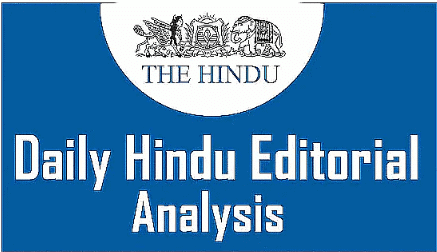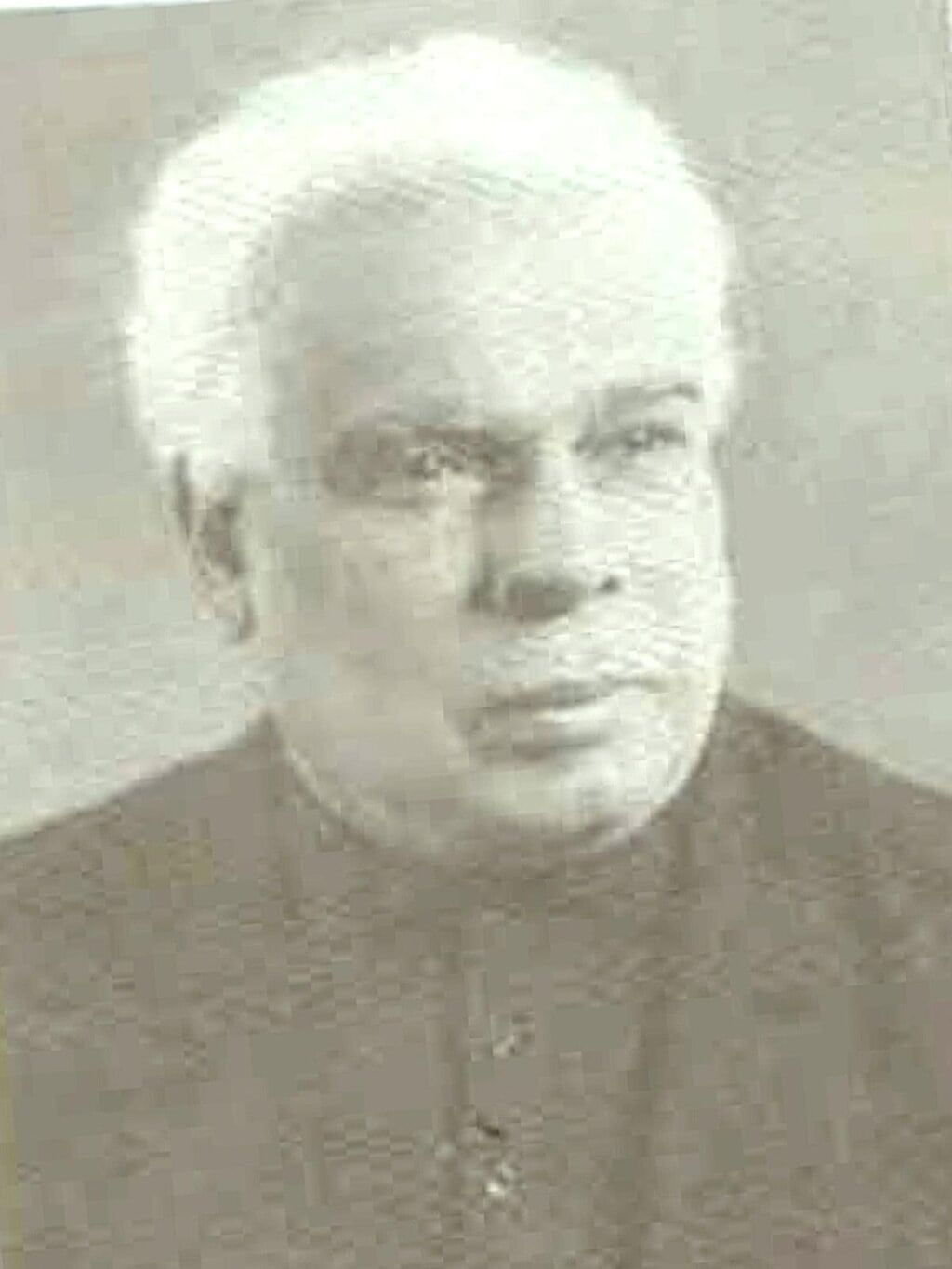The Hindu Editorial Analysis- 9th May 2025 | Current Affairs & Hindu Analysis: Daily, Weekly & Monthly - UPSC PDF Download

Caution and Optimism
Why in News?
The India-UK Free Trade Agreement (FTA) is a significant development in strengthening trade relations between India and the United Kingdom. This agreement aims to eliminate duties on 99% of Indian exports to the UK, benefiting various sectors such as engineering, apparel, and gems and jewellery. It also opens up opportunities for easier movement of professionals and investors between the two countries.Key Highlights for India
- Duty-Free Exports: The FTA will allow 99% of Indian exports to the UK to be duty-free. This is expected to benefit sectors like engineering goods, apparel, and gems and jewellery significantly.
- Industry Optimism: The Engineering Exports Promotion Council of India anticipates that engineering exports to the UK could nearly double to $7.55 billion by 2029-30. Bilateral trade between India and the UK is expected to double to $120 billion by 2030.
- Worker and Professional Benefits: Indian workers temporarily employed in the UK will be exempt from social security contributions for three years. The agreement also facilitates easier movement of professionals and investors, potentially reviving foreign direct investment (FDI) in India.
Tariff Changes and Impact
- Tariff Reductions: India will reduce tariffs on 90% of UK imports, with 85% of these tariffs expected to be zero within a decade.
- Impact on Consumer Behavior: Automotive tariffs are not expected to significantly impact Indian consumer behavior. However, reduced import duties on whiskey and gin may increase competition and potentially slow down the premiumisation trend in India.
Challenges and Criticism
- Previous FTA Issues: The Modi government has faced challenges similar to those of previous administrations in negotiating FTAs, such as the India-UAE CEPA (2022), which reportedly worsened India’s trade balance.
- Concerns from Indian Farmers: Indian farmers have expressed opposition to the FTA due to concerns over reduced tariffs on agricultural products like lamb and salmon. They fear that these changes could negatively impact their already low-margin industries.
Future Considerations for India
- Template for Future Trade Agreements: The India-UK FTA is expected to serve as a model for future trade agreements with the European Union and the United States, which have significantly larger trade volumes with India.
- Caution in Negotiations: India has already made concessions in import duties in response to U.S. demands for food products and automobiles. It is crucial for India to protect its manufacturing sector, which currently contributes less than 2% to global exports, ensuring that it is not undermined in future trade agreements.
Conclusion
The India-UK FTA represents a promising opportunity to enhance economic ties between India and the United Kingdom. While the agreement offers substantial benefits such as duty-free exports, improved access for Indian professionals, and increased trade growth, it also poses challenges, particularly for Indian farmers and the manufacturing sector. With careful management and consideration of these challenges, the FTA has the potential to significantly boost India’s global trade influence and economic prosperity.
Remembering the War, Reminiscing Forgotten Indians
Why in News?
The article discusses the contributions of Kolachala Sitaramaiah and Idris Hasan Latif during World War II, highlighting their impact on technology and aviation. Sitaramaiah, known as the "Father of Chemotology," developed crucial fuels and lubricants for Soviet tanks, while Latif, an Indian Air Force pilot, faced numerous challenges during his missions but later became a prominent figure in strengthening India-France defense relations.
Who was Kolachala Sitaramaiah?

Kolachala Sitaramaiah was a prominent chemist from India, born on July 15, 1899, in Uyyuru, Andhra Pradesh. He is often regarded as the "Father of Chemotology," a field focused on the study of lubricants and combustible materials in technology. Sitaramaiah pursued advanced studies abroad, where he made significant contributions to understanding lubricants, particularly their role in machinery and the development of motor oils.
Contributions during World War II
Kolachala Sitaramaiah made several important contributions during World War II, particularly in the development of fuels and lubricants for Soviet tanks. Some of his key contributions include:
- Fuel Innovation for Soviet Tanks: Sitaramaiah developed kerosene-based fuels and specialized lubricants that significantly improved the performance and maneuverability of Soviet tanks in extremely cold conditions. His innovations were crucial during battles like the Battle of Kursk in 1943, where Soviet T-34 tanks outperformed German Panzer and Tiger tanks.
- Scientific Expertise Redirected to War Effort: Although he volunteered for frontline combat, Soviet authorities recognized Sitaramaiah's intellectual contributions and redirected him to research. His work helped address early mechanical failures in Soviet tanks, which was vital for halting the Nazi ground offensive.
- Foundation for Future Scientific Fields: Sitaramaiah's research during the war laid the groundwork for chemmotology (tribochemistry), the study of chemical changes resulting from mechanical energy. His work also contributed to plasma research, which is important for nuclear fusion. His observations of incendiary weapons inspired further scientific inquiry into plasma, the fourth state of matter.
Challenges Faced by Indian Pilots like Idris Latif during World War II
Indian pilots, including Idris Latif, faced numerous challenges during their missions in World War II. Some of these challenges included:
- Inferior Aircraft and Equipment: Indian pilots were initially assigned outdated biplanes, which put them at a disadvantage compared to their British counterparts. For example, Idris Latif flew patrols along the North West Frontier in older aircraft while British pilots had access to more advanced models.
- Dangerous Combat Environments: Indian pilots had to fly missions in extremely hostile conditions, such as thick jungles, poor visibility, and the constant threat of enemy fire. In Burma, for instance, Idris Latif flew the Hawker Hurricane against Japanese Zero fighters, often taking off and landing from muddy, short strips.
- Health Hazards and Illness: Pilots had to endure unhygienic and disease-prone environments, leading to severe health issues. Idris Latif, for example, fell seriously ill in the humid, mosquito-infested jungles of Burma but refused to abandon his squadron despite his illness.
- Lack of Recognition and Discrimination: Indian pilots often faced racial bias and were under-acknowledged by the colonial British authorities, despite their contributions. Idris Latif and others had to constantly prove their worth before being entrusted with frontline roles in Europe.
- Emotional and Moral Dilemmas: Indian soldiers and pilots grappled with the conflict of serving a colonial power while desiring India's independence. Despite these inner conflicts, Idris Latif remained committed to fighting fascism and chose to stay in independent India after the Partition.
Appointment as Air Chief Marshal
- Idris Hasan Latif became the 10th Chief of the Indian Air Force in 1978, marking a significant moment in the history of the IAF. He was the first Muslim to hold the top position in the Indian Air Force.
- His distinguished service during World War II and later roles earned him this high command. His performance in combat and leadership roles after India's independence showcased his capabilities and leadership qualities.
Contribution to Strengthening India-France Defence Relations
- Role as India’s Ambassador to France (1985–1988): After retiring as Air Chief Marshal, Idris Latif was appointed Ambassador to France, a crucial position for defense diplomacy. His presence in Paris facilitated high-level strategic discussions on defense cooperation between India and France.
- Leveraging Wartime Bonds: Latif's personal connection to World War II and Normandy fostered mutual respect and trust with French counterparts. His visits to Normandy during his tenure, recalling his war contributions, resonated deeply with French officials and strengthened bilateral ties.
- Military-to-Military Cooperation: He actively promoted exchanges between Indian and French armed forces, encouraging joint training initiatives that enhanced operational synergy and cooperation.
- Laying Groundwork for Future Defence Deals: His tenure as Ambassador helped build the foundation of trust that later enabled critical defense procurements, such as the Rafale fighter jet deal, which benefited from the diplomatic groundwork laid during his ambassadorship.
- Promoting Indigenous Capability through Collaboration: Latif supported technology transfers and joint development possibilities with France, aligning with India's interests in acquiring not just equipment but also technical know-how. His efforts contributed to strengthening India's defense capabilities through collaborative initiatives.
Evolution of the Indian Air Force (IAF)
- Formation and Early Years (1932–1947): The IAF was established in 1932 as an auxiliary force under British rule, participating in World War II with limited autonomy. Eg: Indian pilots flew biplanes in the Burma campaign during WWII.
- Post-Independence Expansion (1947–1960s): After 1947, the IAF was reorganized as an independent force, expanding its fleet and training infrastructure. Eg: IAF played a crucial role in the 1947–48 Kashmir conflict using Dakotas to airlift troops.
- Modernisation after Wars (1970s–1990s): Following wars with Pakistan and China, India focused on acquiring advanced aircraft and building indigenous capability. Eg: Introduction of MiG-21s, Miraj 2000 and establishment of HAL’s fighter production line.
- Technology Integration and Strategic Reach (2000s): The IAF integrated AWACS, aerial refuellers, precision-guided munitions, and enhanced air defence systems. Eg: Induction of Sukhoi Su-30 MKI significantly improved long-range strike capability.
- Next-Gen Air Power and Global Partnerships (2010s–Present): IAF has adopted network-centric warfare, multirole fighters, and AI-based systems, while deepening global defence ties. Eg: Procurement of Rafale jets from France and participation in multilateral exercises like Red Flag and Garuda.
Role of France in the Indian Air Force
- Strategic Defence Partner Since Early Years: France has been a consistent defence partner for India, supplying key aircraft and technology since the 1950s. Eg: France provided Ouragan (Toofani) jets in the 1950s, among IAF’s first jet fighters.
- Supplier of Multirole Combat Aircraft: French aircraft have strengthened IAF’s strike capabilities through advanced multirole platforms. Eg: The Dassault Mirage 2000, inducted in 1985, played a decisive role in the Kargil War (1999).
- Rafale Fighter Jet Deal: The acquisition of 36 Rafale jets enhanced India’s air dominance with advanced avionics, weaponry, and capabilities. Eg: Rafale jets were inducted starting in 2020 under a government-to-government deal with France.
- Technology Transfer and Maintenance Support: France has supported India through tech transfer, joint production, and robust maintenance infrastructure. Eg: Hindustan Aeronautics Limited (HAL) maintained and upgraded Mirage 2000s with French collaboration.
- Joint Exercises and Defence Diplomacy: India and France regularly conduct joint air exercises that enhance IAF’s tactical exposure and interoperability. Eg: The Garuda series of exercises improve coordination between French and Indian air forces.
Way Forward
- Deepen Strategic Collaboration in Emerging Technologies: India and France should jointly invest in cutting-edge aerospace technologies such as AI-based combat systems, stealth UAVs, and hypersonic platforms to future-proof IAF capabilities.
- Expand Joint Training and Indo-French Defence Industrial Base: Encourage co-development and co-production of next-generation aircraft and defence systems under Make in India, while scaling up joint military exercises like Garuda for enhanced operational synergy.
|
44 videos|5343 docs|1128 tests
|
FAQs on The Hindu Editorial Analysis- 9th May 2025 - Current Affairs & Hindu Analysis: Daily, Weekly & Monthly - UPSC
| 1. What is the significance of the title "Caution and Optimism"? |  |
| 2. How does the article address the theme of remembering war? |  |
| 3. Who are the "Forgotten Indians" mentioned in the article? |  |
| 4. What role does optimism play in the context of war remembrance according to the article? |  |
| 5. How can the lessons learned from past wars inform current and future policies? |  |
















